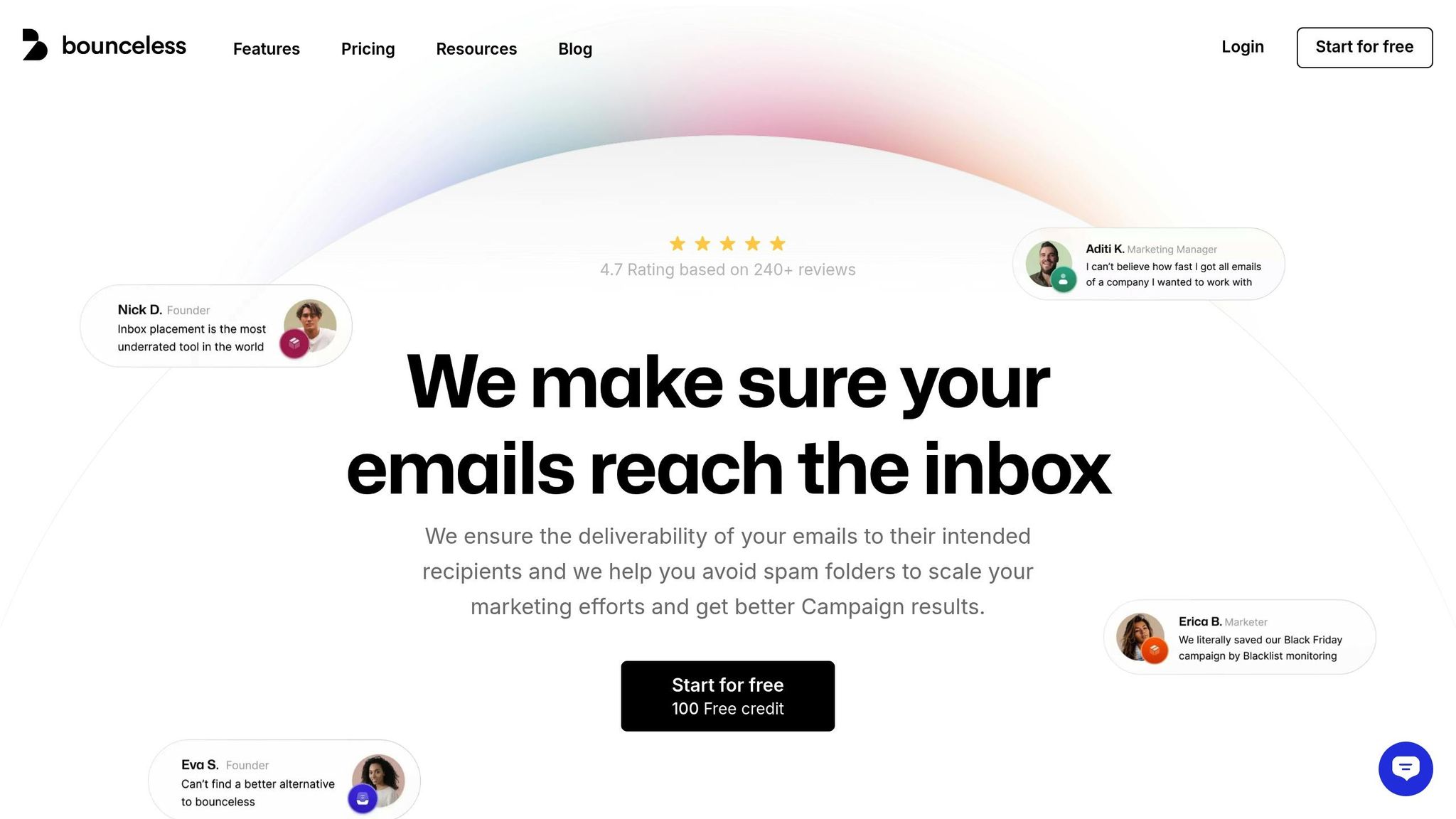A/B testing helps improve email marketing by comparing two versions of an email to see which performs better. To measure success, focus on key metrics like open rates, click-through rates, bounce rates, and conversion rates. Use industry benchmarks to evaluate your performance:
- Open Rate: 15–25%
- Click-Through Rate: 2.5–5%
- Bounce Rate: Less than 2%
- Conversion Rate: 1–5%
Steps to Optimize A/B Testing:
- Set clear goals aligned with benchmarks.
- Test one change at a time (e.g., subject lines or CTAs).
- Use clean, verified email lists for accuracy.
- Compare results against benchmarks to identify improvement areas.
Maintaining a clean email list ensures better deliverability and more reliable test outcomes. Regularly update your strategy based on test results to keep improving.
Ecommerce Email Marketing : Analyzing A/B Testing Results ...
Main Metrics for A/B Tests
To measure the success of your A/B tests, focus on these key metrics. They help you understand performance and identify areas for improvement.
Email Open Rate
This metric shows how effective your subject lines and sender reputation are. You can calculate it using this formula:
Open Rate = (Number of Opened Emails ÷ Number of Delivered Emails) × 100
Keeping your email list updated is crucial for maintaining strong engagement rates.
Click Rate
Click rate measures how well your content engages readers through links and CTAs. For deeper insights, look at the click-to-open ratio, which highlights how relevant your content is to those who open your emails.
Bounce Rate
Bounce rate reflects the percentage of emails that fail to reach recipients. A high bounce rate can harm your sender reputation. To address this, focus on maintaining clean email lists and using verification tools.
"Great tool to validate emails. Works pretty fast and provides great statistics and graphs."
– Frederico C, Digital Marketing Manager
Conversion Rate
This shows the percentage of recipients who complete a specific action, like making a purchase, filling out a form, or downloading a resource. Conversion rates typically fall between 1% and 5%.
"Bounceless is effective! It enhanced our deliverability by having a very affordable cost. Overall, this was really worth our time."
– ASHIMA S, Marketing Executive
Steps to Compare A/B Tests with Benchmarks
1. Define Your Goals
Start by setting clear, measurable goals that match your email strategy. For instance, if your current open rate is 15% and the industry average is 20%, aim for a realistic improvement, like increasing it by 2–3 percentage points through subject line testing. Once your goals are in place, determine the metrics that will track your progress effectively.
2. Pick the Right Metrics
Focus on metrics that directly tie into your business objectives and can be measured within a specific timeframe. To ensure accuracy, use a clean and verified email list. Then, organize your email groups to test these metrics properly.
3. Divide Your Email List
Clean up your list by removing invalid, duplicate, or incorrect entries with verification tools. After that, split the list into equally sized groups that meet statistical requirements. Keeping your list in good shape ensures accurate comparisons for your A/B tests.
4. Measure Results Against Benchmarks
Compare your test outcomes with industry benchmarks by focusing on:
- Deliverability rates
- Open and click-through rates compared directly to benchmarks
- Conversions measured against your original goals
Keep your email list updated to maintain reliable comparisons. Pay close attention to deliverability, engagement, and conversion rates to see how they align with your goals.
Best Practices for A/B Testing
When refining your email campaigns, follow these steps to ensure your A/B tests deliver clear and actionable results.
Test One Change at a Time
Focus on tweaking a single element in your email to pinpoint its exact impact. Whether it's the subject line, preview text, or a call-to-action button, isolating one variable ensures you can directly link performance changes to that specific adjustment. For instance, if you're testing subject lines, keep the rest of the email unchanged. Testing multiple elements simultaneously can muddy the waters, making it harder to identify what truly worked.
Ensure Test Groups Are Large Enough
The size of your test groups plays a crucial role in achieving reliable results. Use groups that are big enough to provide statistically significant insights. Key factors to consider include your total list size, expected response rates, and the confidence level you’re aiming for. A clean, verified list will further enhance the accuracy of your testing outcomes.
Keep Email Lists Clean with Bounceless.io

Maintaining a clean email list is essential for accurate testing. A great example: In March 2023, Spotify slashed its bounce rate from 12.3% to 2.1% within 60 days. This improvement boosted deliverability by 34% and contributed $2.3 million in revenue.
Regular list cleaning helps you:
- Remove invalid email addresses
- Detect and avoid spam traps
- Eliminate duplicate entries
- Validate email formats
- Assess potential delivery issues
By keeping your list updated, you can ensure reliable test results and improve campaign performance over time.
Update and Improve Regularly
Use insights from your A/B tests to refine your email campaigns. Compare your results with industry benchmarks to identify areas that need attention. If certain metrics fall short, design new tests to address those gaps. Keep a record of what works and track progress over time. Before starting a new testing cycle, make sure your email list is clean to maintain accuracy.
"Great tool to validate emails. Works pretty fast and provides great statistics and graphs." - Frederico C, Digital Marketing Manager
Conclusion
A/B testing works best when benchmarks are used as reference points to guide improvements tailored to your audience and business goals. Comparing test results to industry standards helps marketers make informed decisions that enhance campaign performance.
User feedback highlights the importance of email verification in boosting campaign success. Verified email lists lead to more accurate test results and better campaign outcomes, which are essential for successful email marketing efforts.
To get the most out of A/B testing, focus on these practices:
- Measure performance against industry benchmarks.
- Ensure test groups are statistically significant.
- Regularly verify and update email lists.
- Make adjustments based on benchmark comparisons.
These steps provide a dependable way to refine and optimize campaigns over time.

